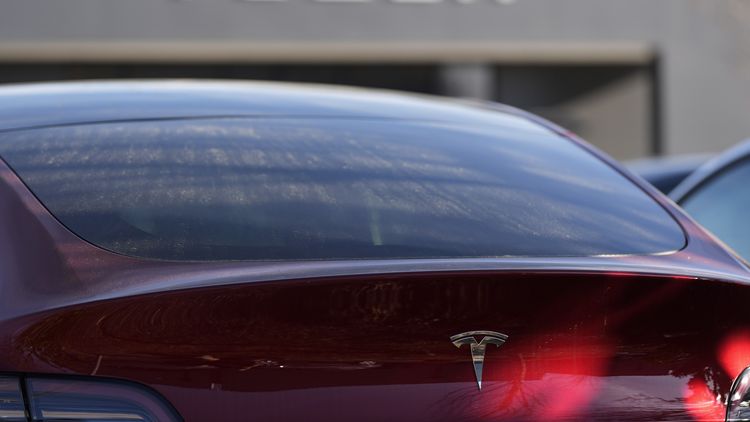McKnight Foundation decarbonizes historic building, showcasing technique to fight climate change

The humble facade of two, 140-year-old storefronts in downtown Minneapolis conceals a building on the cutting edge of clean energy technology.
The McKnight Foundation’s new headquarters on Washington Avenue is a fully decarbonized, 45,000-square-foot building. The Minnesota-based nonprofit is one of the largest philanthropic organizations in the country and provides millions of dollars in grants for environmental initiatives each year. When the foundation moved into a new headquarters this summer, it committed to a major retrofit.
“It allows us to embody our mission,” McKnight Foundation President Tonya Allen told Sahan Journal.
It may be the first existing building in Minnesota to operate without natural gas, according to Greiner Construction, a Minneapolis-based firm that worked on the project. That’s a major milestone in Minnesota, where pollution generated by buildings makes up 18% of all greenhouse gas emissions, according to a 2025 state report.
It’s relatively easy for a new construction project to achieve high energy efficiency standards, but McKnight wanted to show that older buildings could become green, too, Allen said.
“The most sustainable building is often the one that already exists,” said Ben Passer, director of McKnight’s Midwest Climate and Energy program.
Going green
Most buildings in Minnesota are powered by natural gas, which generates pollution. There are two primary alternatives to natural gas: electric-powered boilers and heat pumps and geothermal technology, which uses energy from below ground to regulate temperature. McKnight employed a third technique, thermal energy tanks.
The tanks are basically massive thermoses located behind the building. At night, during off-peak demand hours, the tanks generate ice which is stored and slowly released for cooling during the day. In the winter, the tanks store excess heat and disperse it back into the building.
“It’s a pretty rare technology for a building of our size,” Passer told Sahan Journal.
McKnight wanted to show the technology, which is more commonly used in the Southwest, could work in Minnesota. The foundation was also able to take advantage of federal tax credits through the Inflation Reduction Act to receive $1.5 million toward the project.
Laura Salveson, McKnight’s director of facilities, said the retrofit included an effort to use materials that were diverted from landfills. The foundation worked with an organization called Habitable to source recycled materials that have lower environmental impacts, she said.
Salveson and the facilities team went through the process to get the building certified by the U.S. Green Building Council, which awarded the space a Gold ranking on its Leadership in Energy and Environmental Design (LEED) scale, the second highest score. That’s a big upgrade for an office building created by combining two store fronts dating to 1883 and 1890.
McKnight was inspired by the energy transformations made by two of their grantees in Minneapolis, Allen said. Sabathani Community Center and the Minneapolis American Indian Center both went through recent energy efficiency transformations, and are part of a program Xcel Energy and the city of Minneapolis call Resilience Hubs. The idea is to create places with low carbon footprints that can be a stable source of power in their neighborhoods.
“We wanted to be a resilience hub as well,” Allen said. “We wanted to choose a historic building, and we wanted to be a place that could be an example to others.”
The McKnight Foundation’s former headquarters was nearby, and the organization wanted to stay downtown, Allen said. The new space is larger, with rooms big and small to host conferences and meetings. The foundation invites its grantees to use the facility, and has constant visitors. More than 2,000 guests have used the building since it opened in May.
“It’s been a busy space since we’ve moved in,” Salveson said.
Local emphasis
In 2023, as federal money for climate change work was being doled out at a record pace, the McKnight Foundation bolstered its giving for projects aimed at environmental initiatives. The organization committed an additional $200 million for grantmaking, and today funds about $32 million for climate and energy projects in the Midwest.
President Donald Trump’s administration has pulled back from many of those initiatives, creating a bigger gap to fill for organizations like McKnight. But the organization sees a lot of opportunities at the state level for climate work, Allen said, and the organization is trying to focus on positive impacts.
“Right now, the emphasis is local,” Allen said.
People talk about climate change in different ways based on their worldview, Allen said, but most recognize that extreme weather is more frequent today. They see the impact on their local infrastructure and farming harvests, she said. It’s important to talk to people about how they see the climate changing their world, and to use that as a window to find solutions.
“Let’s focus on the most positive thing we can do,” she said.
___



